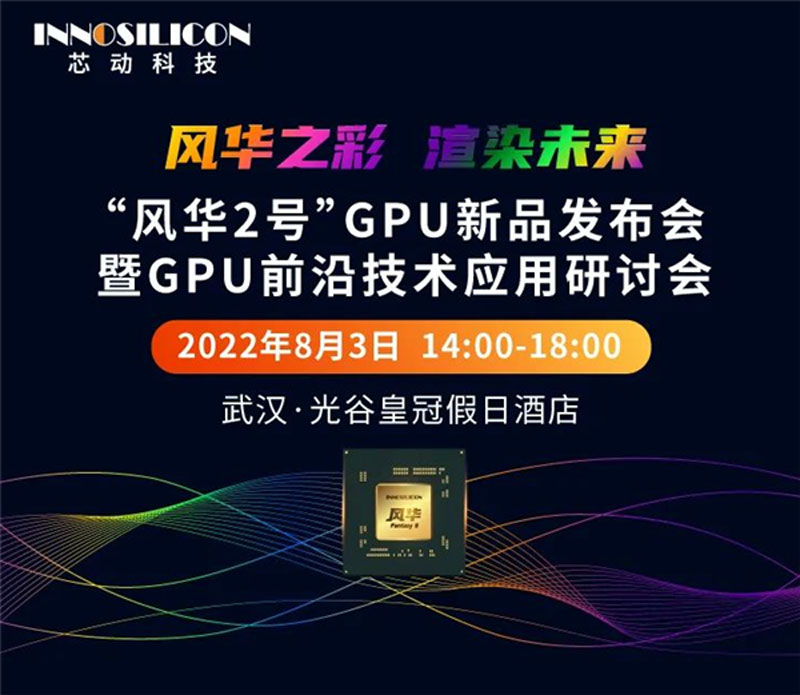Innosilicon Fenghua No.2 GPU Launching August 3
China’s Innosilicon continues to strive forward in its attempts to provide the nation with a “domestic desktop GPU” that it can be proud of. The firm launched the Fenghua No.1 last November, but we're still learning about the first Innosilicon branded GPU, and it's nowhere to be seen on our list of the best graphics cards. The November desktop GPU still appears to be in stealth mode, but such practicalities aren’t stopping the firm’s PR machine, as it intends to launch Fenghua No.2 on August 3, reports MyDrivers.


The core idea behind Fenghua No.2 seems to be doubling the potential performance by doubling up the GPU cores at its disposal. However, it doesn’t do this with a bigger monolithic GPU die featuring 2X more cores; rather, it intends to slap another identical GPU on the PCB.
AMD and Nvidia GPUs have tested this path over the years with SLI and CrossFire, but as a gaming solution it has fallen out of favor, due to inherent issues and complexities. Games typically needed CrossFire and SLI drivers, as well as specific game code support, and even then multi-GPU setups were prone to micro-stuttering problems. Nvidia has almost completely abandoned SLI with its latest generation Ampere GPUs, with only the RTX 3090 and 3090 Ti sporting the required NVLink connector.
Regardless, let's get back to the Fenghua No.2 GPU. We can set the baseline as the Fenghua No.1, and the new dual-GPU card exactly doubles the performance, going from 5 to 10 TFLOPs FP32, 160 to 320 GPixels/s, and AI (INT8) performance goes from 25 to 50 TOPS. All the codec output capabilities are also doubled, though such scaling sounds more theoretical than practical or measured.
Our last report about Innosilicon graphics cards came with hints of GeForce RTX 3060 performance levels for the single die desktop card. Now we are being told to expect the Fenghua No.2 to double the performance. Please add a double helping of salt as well.
Key specs of the Fenghua No.1 include its use of a 12nm fabrication process for the GPU, which is thought to be based on Imagination Technologies’ PowerVR technology. Additionally, Innosilicon is equipping the No.1 card with 4GB, 8GB, or 16GB of GDDR6 or GDDR6X VRAM, and up to 19 Gbps speeds for up to 304 GB/s bandwidth. The graphics cards will supposedly support a wide variety of OSes, APIs, and codecs, and the single-GPU model is touted to consume just 50W. (Needs more salt.)
One area where Innosilicon is definitely excelling, compared to western graphics technology companies, is in preventing any Chinese leaks of performance and benchmarks and so on from forums, websites, and social media video platforms. It is frustrating to see these launches and claims, with no hardware getting into third party tester hands for a thorough assessment.
We can only hope the presentation next Wednesday will contain some substantial information and benchmarks worthy of reporting. We would love to get some of these graphics cards so that we can add them to our GPU benchmarks hierarchy. Given the features and specs, we can only guess that real-world performance perhaps doesn't match up with the claims.
Get Tom's Hardware's best news and in-depth reviews, straight to your inbox.

Mark Tyson is a news editor at Tom's Hardware. He enjoys covering the full breadth of PC tech; from business and semiconductor design to products approaching the edge of reason.
-
Pollopesca Given how long it’s going to take Intel to get their GPU drivers up to snuff for the plethora of games out there, I don’t imagine things will be any easier for Innosilicon. Curious to see how it performs IRL.Reply
